The white village of Frigiliana, in the Axarquia region of the Costa del Sol, appears in lists of Spain’s most beautiful villages
By Nick Nutter | Updated 29 Aug 2022 | Málaga | Villages |
Login to add to YOUR Favourites or Read Later
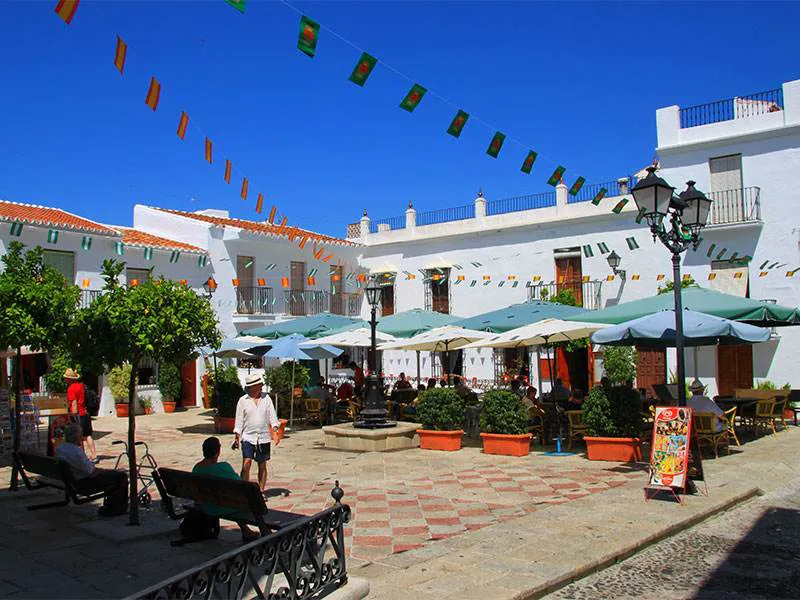
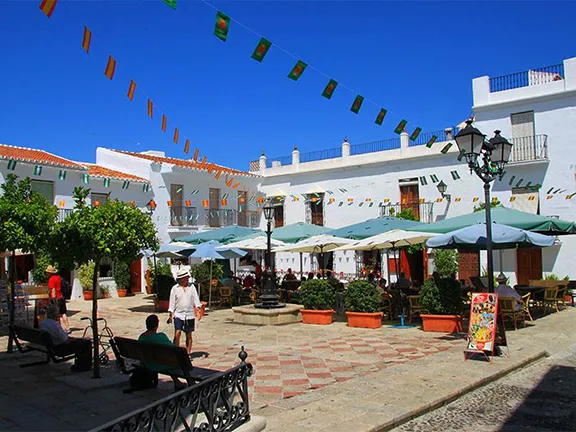
Plaza de la Iglesia
The small white village of Frigiliana, in the Axarquia region of the Costa del Sol, appears in lists of Spain’s most beautiful villages and is regularly voted Andalucia’s prettiest village by the tourism authority.
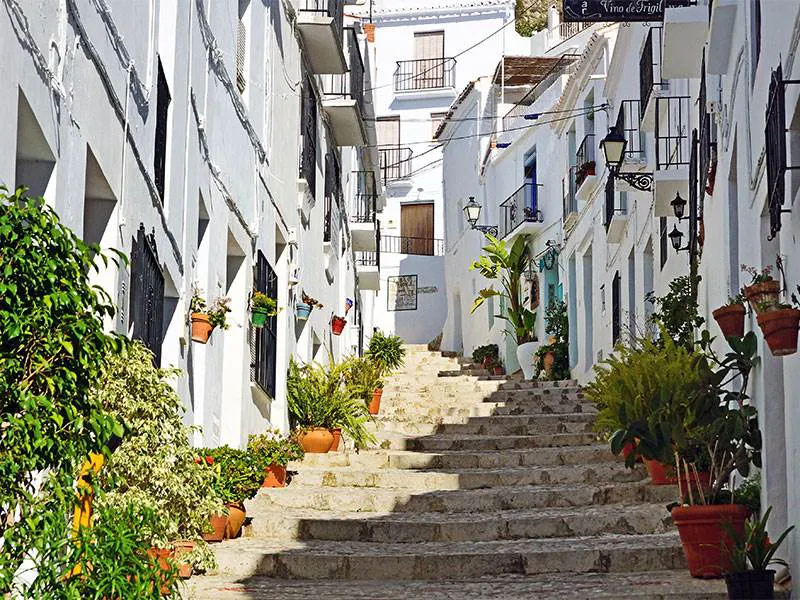
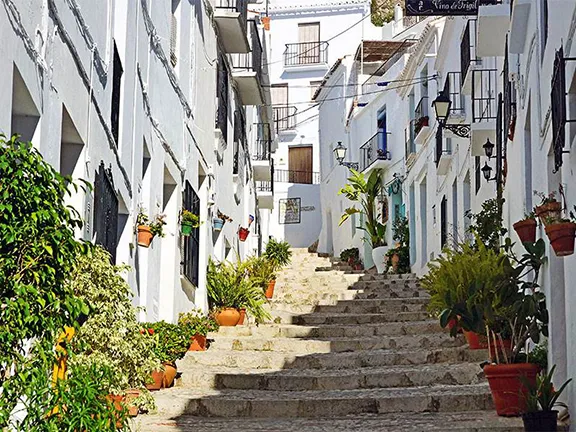
Mujedar style buildings
Only a few kilometres north of the tourist resort of Nerja, Frigiliana is on the local bus route. For those with vehicles, there is a large underground car park at the foot of the village. Frigiliana is best explored on foot.
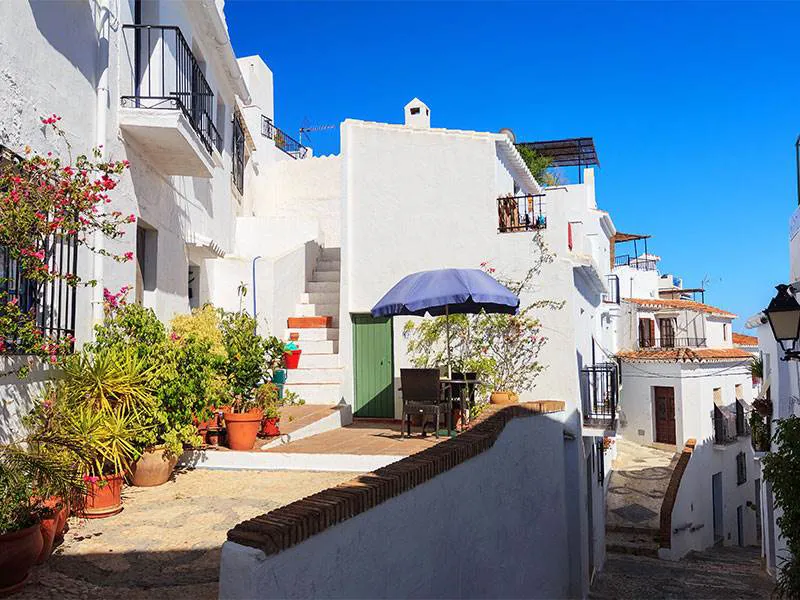
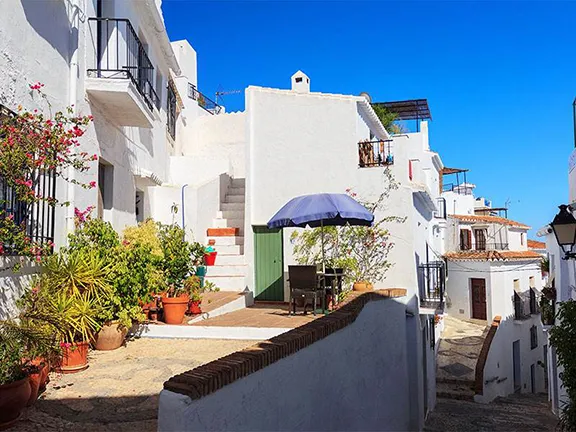
A maze of narrow, winding streets, many stepped, take you up into the town. The Mudéjar style buildings are all white, as you would expect in a ‘white village’, enlivened by balconies and planters full of flowers. You will find small souvenir and artisan shops but not as many as you see in other places. Frigiliana is more discreet. Keep an eye open for shops selling the local pottery and ceramics, typically decorated with distinctive Arab designs. Whichever way you go you are likely to end up in the social focal point of the village, Plaza de la Iglesia, with its bars and restaurants. In summer, parasols shade the square from the fierce sun. Many of the bars you pass will sell the locally produced wine. The more you explore Frigiliana, the more you realise that it is much more Moorish than many other towns and villages in Andalucia.
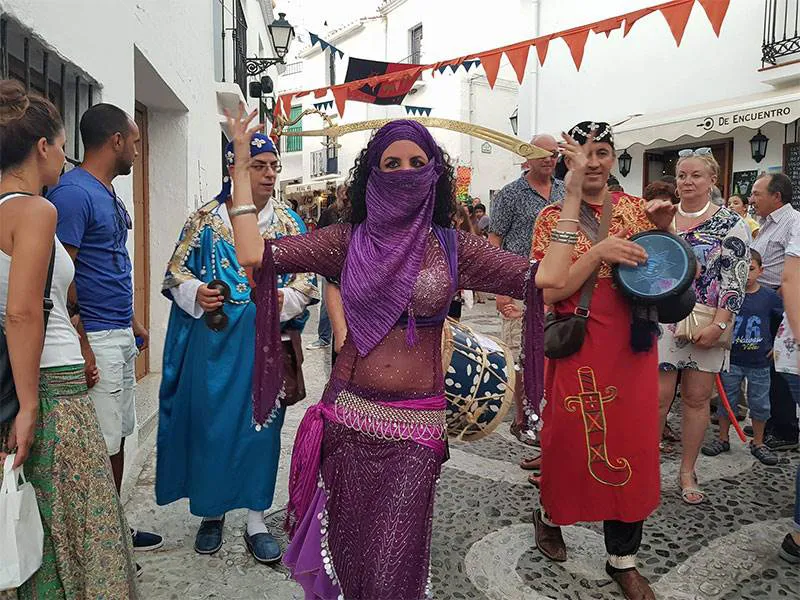
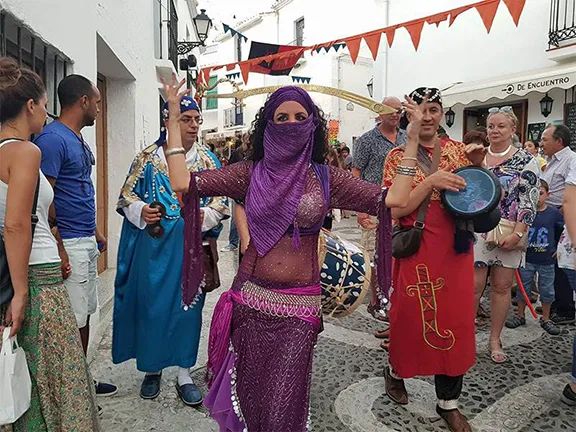
Festival de las Tres Culturas
After the reconquest in 1492, the Kingdom of Granada, that included the Frigiliana area, had barely 150,000 inhabitants, most of whom were Moriscos, former Moors that had nominally converted to Christianity. They were well integrated into the local communities. In many villages in the region the only ‘Old Christian’, i.e. Christians before the reconquest, was the village priest.
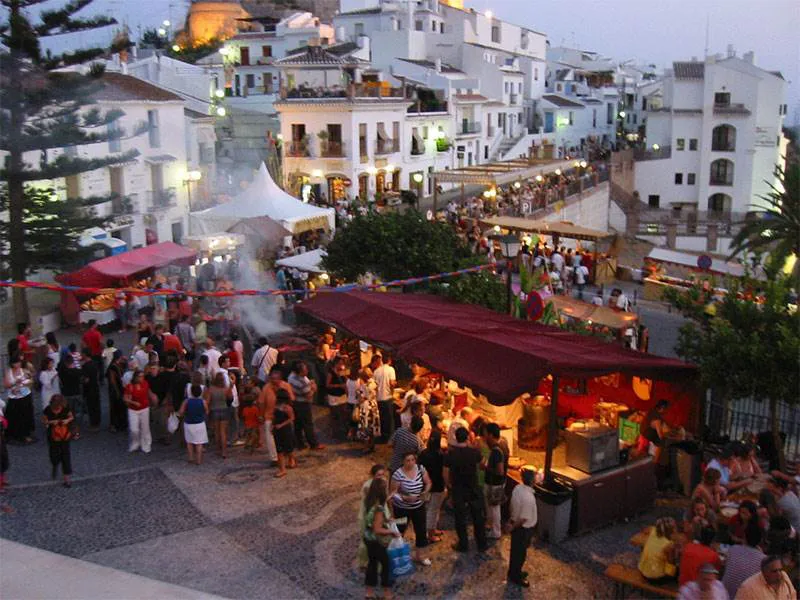
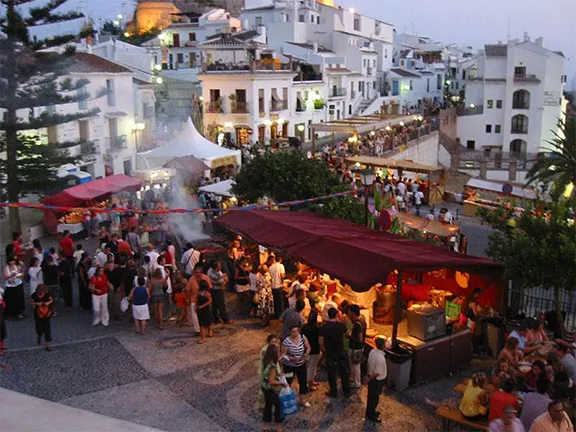
Festival of Three Cultures
However, in 1567, Phillip II gave his approval to allow Moriscos to be persecuted in many ways, including house inspections and destruction of mosques, to make sure they were not continuing to practice Koranic rites. Not surprisingly the Moriscos resented these measures and in some areas, rebelled. The conflict became known as the War of the Alpujarras and lasted from 1568 – 71.
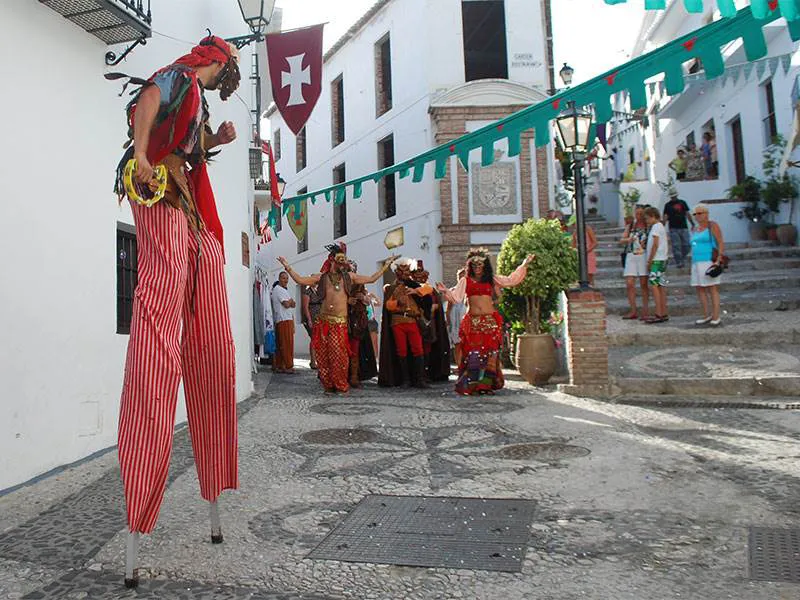
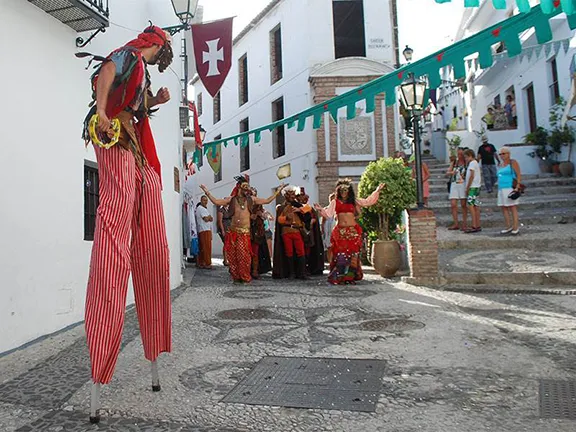
Festival de las Tres Culturas
On the hill above Frigiliana, El Fuerte, stood a castle. The Moriscos retreated to the castle in June 1568 when the Spanish royalists laid siege to the village. In September the same year, rather than submit, it is said the Moriscos threw themselves off the towers.
Nearly 500 years later, the area still has sympathy for the Moors, and this can be seen at the Moorish, Christian festivals that are held in some of the villages and cities such as Almeria. In Frigiliana the ‘Festival de las Tres Culturas’ is celebrated over four days towards the end of August. The three cultures are Christian, Moorish and Jewish traditions.